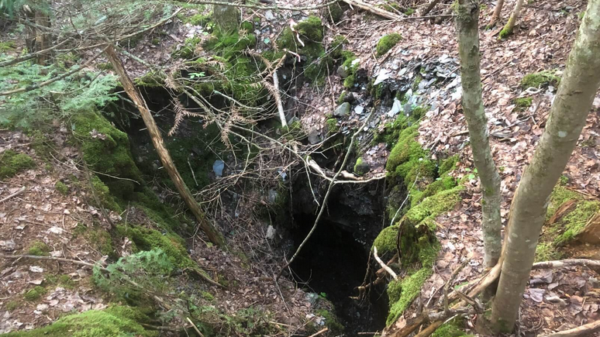Nevada King Gold Corp. (TSXV: NKG) (OTCQX: NKGFF) announced assay results from nine reverse circulation holes and two core holes completed earlier at its Atlanta Gold Project located 264 kilometers northeast of Las Vegas, Nevada.
The company drilled the holes in section 22-8N across the high grade feeder zone. These are associated with several strands of a braided network of structures that comprise the Atlanta Mine Fault Zone (AMFZ). Also, the company is drilling a series of fences across the AFMZ. This will help to define the grade distribution of higher grade zones correlated to the AFMZ.
“Section 22-8N is important for revealing two distinct zones of higher grade Au-Ag mineralization along the AMFZ – one coinciding with narrow fault blocks developed along the West Atlanta Fault, and the other occurring within narrow fault-bounded blocks formed in between the Atlanta King and East Atlanta Faults,” said Cal Herron, exploration manager for Nevada King.
Read more: NevGold starts drilling at Nutmeg Mountain property
Read more: 2023 will be a ‘very strong’ year for gold mining: NevGold
Nevada King Gold assays along West Atlanta Fault reveal high value intercepts
The assays released today tie into hole AT21-62 drilled in 2021. The hole returned 55m averaging 5.34 g/t Au starting at 9.1m depth on the east end of Section 22-8N.
These holes intercepted high-grade gold and silver mineralization in oxide material moving west across the AMFZ. Secondarily, core holes AT22HG and AT22HG-2T bottomed in Au-Ag mineralization at 293 metres and 265 metres.

Drill highlights. Chart via Nevada King.
Additionally, holes AT22NS-20 and AT22NS-54 penetrated the silica breccia zone above a fine-grained dacite porphyry dike encountered south of this section along the western boundary of the fault on Section 22-6N. Intercepts above and next to the intrusion had higher Au-Ag grades, and the volcanic section west of the intrusion is mineralized. There’s no mineralization to the east of the intrusion.
Also, mineralization in hole AT22NS-71 is hosted in silicified breccia sandwiched on top and bottom between mineralized porphyritic quartz latite tuff dike breccia bodies. Nevada King cut down through barren dolomite in hole AT22NS-71, then through anomalous tuff dike breccia beneath the mineralized zone. Finally it drilled through the Atlanta King Fault (AKF) and into quartzite.
Read more: NevGold starts drilling at Nutmeg Mountain property
Read more: NevGold’s oxide gold drill program in Nevada finds positive results
Nevada King positioned to track structures along strike to north and south
The lithotype sequence suggests the AKF is a conduit for channelling felsic dikes and dike breccia bodies into the silica breccia horizon. Previously, the company discovered higher Au-Ag grades in the silica breccia proximal to these tuff dikes south along the AKF. Nevada King uses the close relationship between these dikes and Au-Ag mineralization as a roadmap for exploration as it looks for higher grades, drilling northwards along the AMFZ.
“We have already seen this relationship in other holes south of Section 22-8N, and has become an important indicator for tracking gold mineralization southward from the pit into the South Extension Target and beyond,” said Herron.

Drill map Atlanta project. Image via Nevada Gold.
The clustering of high-grade hits reported in holes 88-9, 88-14, AC-1 and KR97-6 is unusual at Atlanta because of the high hole density along this section. Nevada King is now in good position to track the structure because the fault block is well defined. Similarly, the 30 meter wide fault block zone between Atlanta King and East Atlanta Faults is gaining definition. Consequently, the company can now track it along strike. These new results help with accurate modelling of these high-grade zones.
Follow Joseph Morton on Twitter
joseph@mugglehead.com













